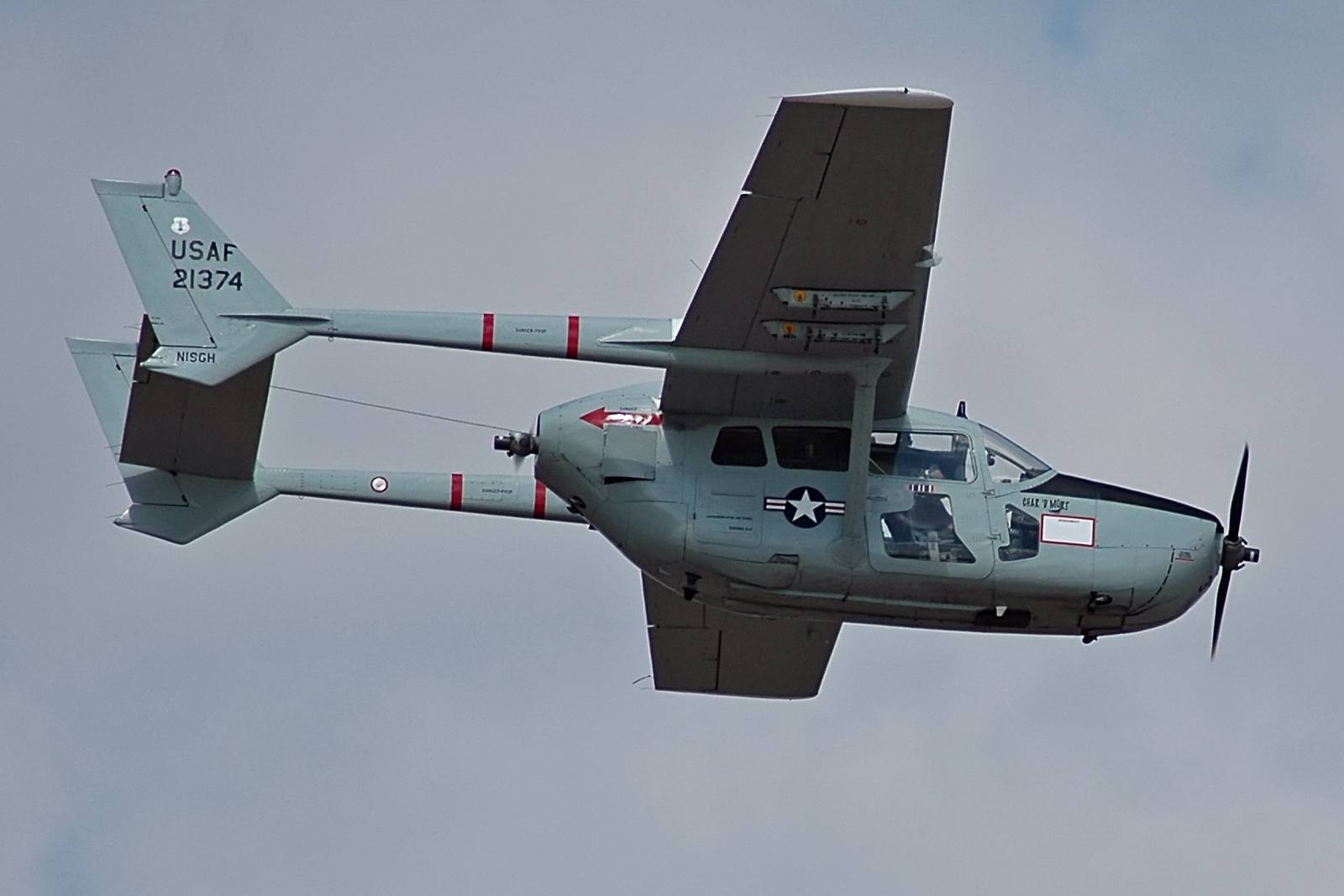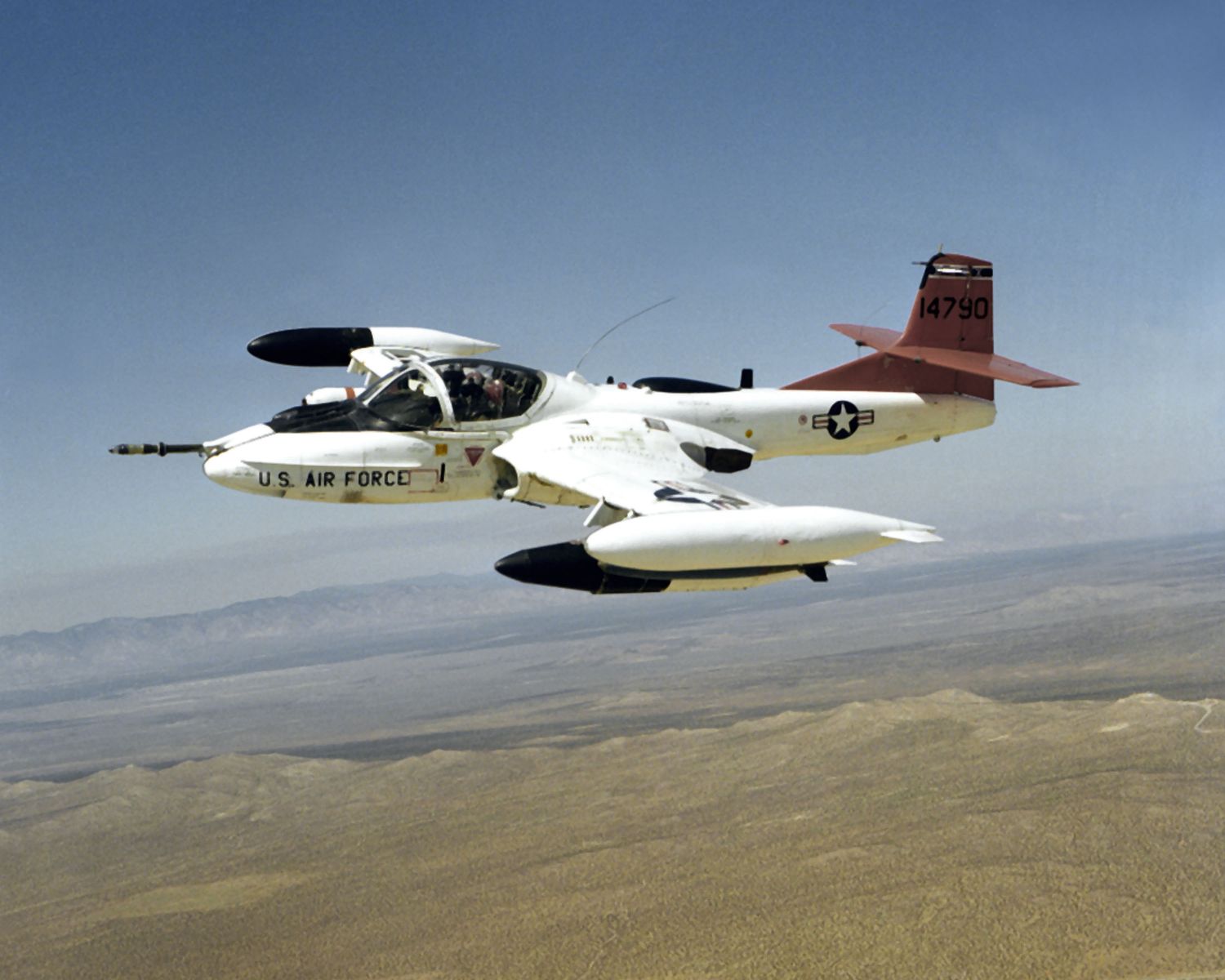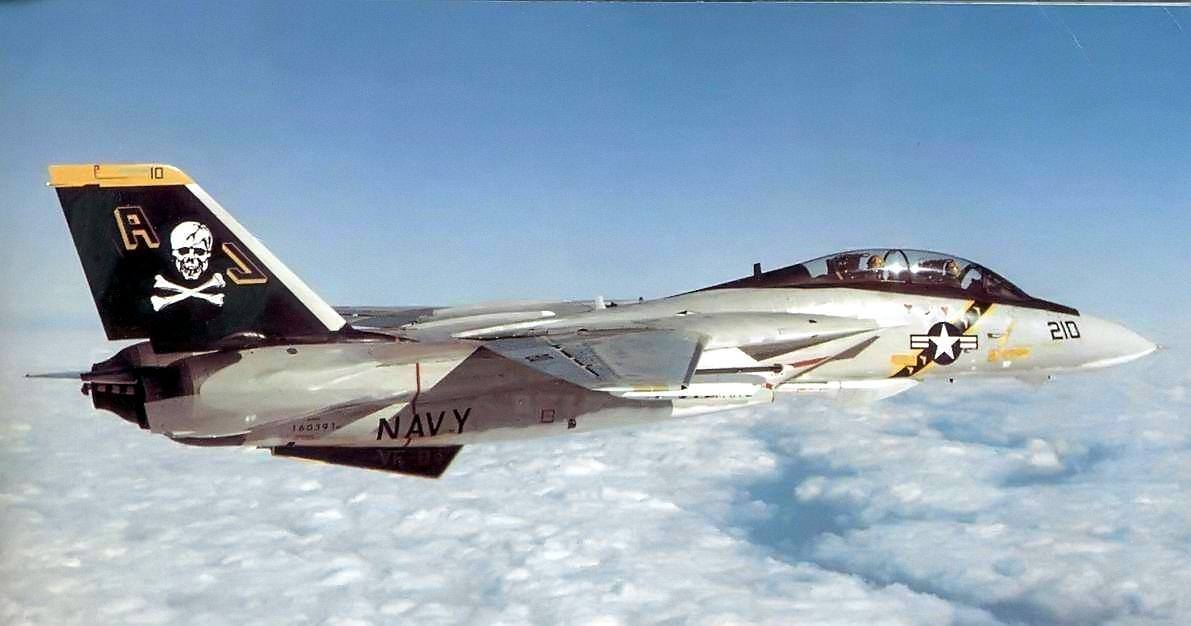While you surely know about iconic Vietnam-era planes like the F-4 Phantom II or the UH-1 Huey helicopter, you probably haven’t heard much about aircraft like the Black Spot, Skyknight, or the Dragonfly. Although they aren’t as well-known, these fascinating warplanes played crucial roles during operations in Southeast Asia:
Hiller OH-23 Raven
The OH-23 was used as a scout helicopter during a time when the U.S. military was still figuring out how to best utilize helicopters on the battlefield. Ravens would scout ahead of friendly units, but were underpowered for Vietnam’s terrain and their skid guns (when they worked) weren’t adequate either. Nearly 100 of these lightweight helicopters were lost before the Army replaced them with the vastly improved OH-6 Cayuse in 1966.
Grumman HU-16 Albatross
This flying boat made its combat debut during the Korean War, saving some 1,000 downed pilots and aircrew. By the time the Vietnam War erupted, the Albatross was still in the air, conducting combat search-and-rescue missions and occasionally inserting/extracting special operations forces. Equipped with jet-assisted takeoff (JATO) rockets, the HU-16 could take off from seas over eight feet.
Douglas EKA-3B Skywarrior
The A-3 was by far the heaviest aircraft to operate from an aircraft carrier during its day, earning it the nickname “The Whale.” A-3s laid mines and dropped bombs during the early stages of the Vietnam War, but were later modified to the multi-role EKA-3B. This plane could carry refuel for other Naval aircraft, but the Whale still had plenty of room to spare for electronic jamming equipment, which it used to jam enemy radars when not topping off other warplanes.
Douglas EB-66 Destroyer
When Douglas designed the B-66 Destroyer (a derivative of the A-3 Skywarrior), it was intended for a high-altitude nuclear strike role. During the Vietnam War, the warplane had traded its weapons for antennae and countermeasure equipment. The EB-66 Destroyer collected signals intelligence on enemy anti-aircraft systems and would accompany F-105 strikes, jamming enemy radar.
North American RA-5C Vigilante
The A-5 Vigilante entered service as a supersonic carrier-based bomber, but with advancements in ballistic missile technology, the platform adapted to the fast reconnaissance role. After U.S. planes conducted a strike, enemy anti-aircraft guns, surface-to-air missiles, and enemy MiGs were waiting on Vigilante crews to follow up with a bomb damage assessment, and 18 RA-5s were shot down during the Vietnam War.
Grumman TF-9 Cougar
The Cougar served as an advanced jet trainer, which was a more advanced, swept-wing version of the F9F Panther. Marine Corps aviators flew TF-9s out of Da Nang and Chu Lai airfields to direct airstrikes in South Vietnam between 1966 and 1968.
Fairchild NC-123K Black Spot
In 1965, the Air Force modified two C-123 Provider cargo aircraft for Project BLACK SPOT. The nose cone was extended to hold forward-looking infrared (FLIR), low-level light television, and a laser range finder for night surveillance. In the cargohold, they added weapons racks to hold cluster bombs, which they used to destroy hundreds of trucks along the Ho Chi Minh Trail.
Martin B-57 Canberra
What the American-built, British-licensed B-57 lacked in sex appeal it more than made up for in versatility. The tactical bomber could hold nearly four tons of ordnance, could strafe ground targets with its eight .50-cal guns (later upgraded to 20mm cannons), operate as a highly effective night reconnaissance platform (RB-57 model), drop laser-guided munitions, and one was even turned into a gunship by adding a M61 Vulcan 20mm cannon.
Vought F-8 Crusader
The F-8 entered service at the tail end of the era when the gun was the warplane’s primary weapon. After the Crusader, fighters primarily depended on missiles for combat as the thinking at the time was that dogfights were a thing of the past (they weren’t). “Last of the Dogfighter” aviators shot 16 MiG-17s and three MiG-21s out of the sky, four by using their 20mm cannons.
Cessna O-1 Bird Dog
The Bird Dog was the first plane ordered by the Army after the Air Force became a standalone service in 1947. Army, Air Force, and Marine aviators (in addition to CIA “Raven” pilots flying covert missions in Laos and Cambodia) used the O-1 for observation, forward air control, radio relay, and support for search-and-rescue missions until it was replaced by O-2 and OV-10 aircraft.
Cessna O-2 Skymaster
The twin-boom “Oscar Deuce,” which had propellers in front and back of the fuselage, entered service in 1967. It carried out the same functions as its O-1 predecessor, but was fitted with loudspeakers for psychological operations and was also used for night reconnaissance. 178 Skymasters were shot down or otherwise lost over Southeast Asia.
OV-10 Bronco
North American Rockwell’s versatile, twin-boom OV-10 Bronco could do it all: tactical air support, observation, reconnaissance, transport casualties, or even carry paratroopers. Since it could operate from short, unimproved air fields, amphibious landing ships, or aircraft carriers, the Air Force, Navy, and Marine Corps all used the Bronco. The OV-10 could carry a variety of weapons (up to three tons on its pylons), and also saw service during Operation DESERT STORM and Operation INHERENT RESOLVE in Iraq and Syria.
Douglas EF-10B Skyknight
The Douglas EF-10B Skyknight was the only Korean War-era jet fighter that also operated in Vietnam. The Marine Corps used “Druts” for electronic warfare, jamming enemy surface-to-air missile radars. The aging warplane was eventually replaced by the A-6 Intruder.
[in_content_ad_bannersnack]
OA-37 Dragonfly
Like the Bronco, Cessna’s OA-37 Dragonfly was a counterinsurgency aircraft. The “Super Tweet” accompanied helicopters and flew forward air controller missions, carrying an assortment of high-explosive or napalm bombs, rockets, miniguns, cluster munitions, and rockets. After service in Southeast Asia, the OA-37 also saw action during Operation JUST CAUSE in Panama.
Douglas A-26 Invader
The A-26 entered service during 1944, seeing action in both the Pacific and European theaters with the Army Air Force. Invaders carried out the first and last Air Force bombing raids during the Korean War, and were among the first U.S. aircraft in operation over Southeast Asia. The CIA used these twin-engine attack aircraft to “advise” Royal Lao and South Vietnamese forces, but actually were carrying out combat counter-guerilla operations during the early stages of the conflict.
North American T-28 Trojan
Like the A26, T-28 Trojans were sent to Southeast Asia in the early 1960s for Project FARM GATE and used in counter-guerilla operations. Prior to the Gulf of Tonkin incident, they were painted with Republic of Vietnam Air Force markings and a South Vietnamese “observer” was put in the backseat (and ordered not to touch anything). In 1962 the T-28 became the first U.S. fixed-wing warplane shot down in South Vietnam, killing Capt. Robert Simpson of the 1st Air Commando Group and his observer.
Grumman E-1 Trader
The “Stoof with a Roof” was the U.S. Navy’s first purpose-built early warning carrier aircraft. The E-1’s distinctive radar could track targets over 250 miles away, and was used to vector combat air patrol aircraft to targets and control large strikes on North Vietnamese targets. The E-1 would eventually be replaced by the E-2 Hawkeye, which still serves the fleet today.
Lockheed EC-121 Batcat
The United States spent billions of dollars on electronic warfare during the Vietnam War, hoping to stop the flow of material and manpower along the Ho Chi Minh Trail. Likely-communist infiltration routes across Southeast Asia were seeded with countless acoustic and seismic detectors, which broadcast signals of enemy activity to EC-121 Batcats flying overhead. These planes would then relay the signals to computers back at headquarters for analysts to pinpoint the North Vietnamese trails.
Kamann HH-43 Huskie
The twin-rotor Huskie entered service as a fire rescue helicopter, able to reach the scene of an aircraft crash quicker than ground vehicles. It carried foam for firefighting in addition to firemen and medics, and the downdraft from the counter-rotating blades dispersed smoke and opened a corridor to access and extricate the aircrew. Air Force Pararescue crews operated out of armored HH-43s, nicknamed “Pedros,” for combat search-and-rescue, and saved more personnel than all other aircraft combined.
Grumman F-14 Tomcat
Operation FREQUENT WIND marked the combat debut of the F-14 Tomcat; the brand-new swept-wing fighters were overhead providing cover as crews extracted American personnel during the 1975 Fall of Saigon. Over the next 40 years the F-14 served the fleet as an interceptor and air superiority fighter, provided tactical reconnaissance when the RF-8 Crusader left service in the 1980s, and adapted to the ground-attack role during Operations ENDURING FREEDOM and IRAQI FREEDOM. Sadly, many of the Tomcats were shredded after their retirement in 2006 to prevent Iran (who also operates the F-14) from obtaining parts.




































